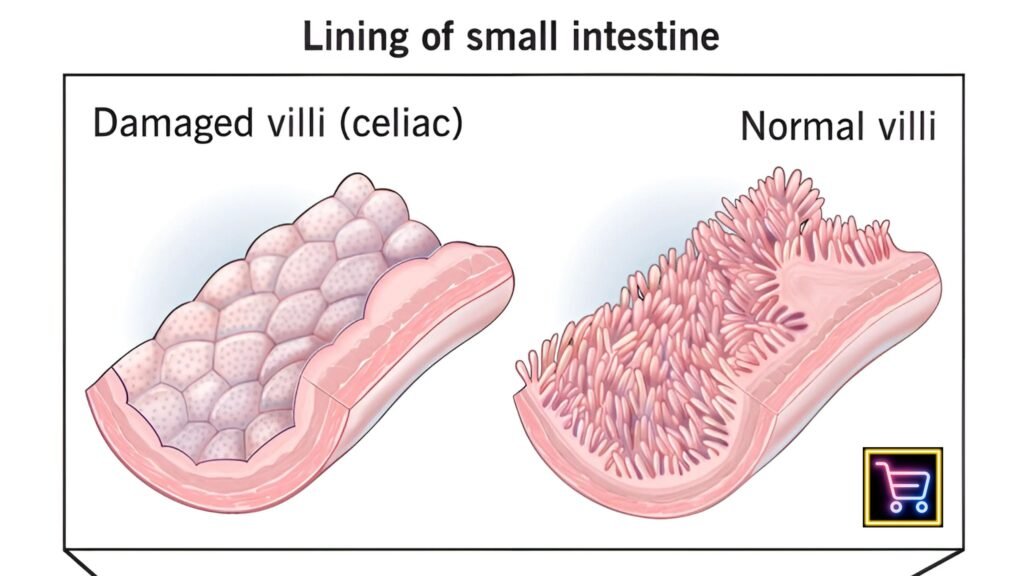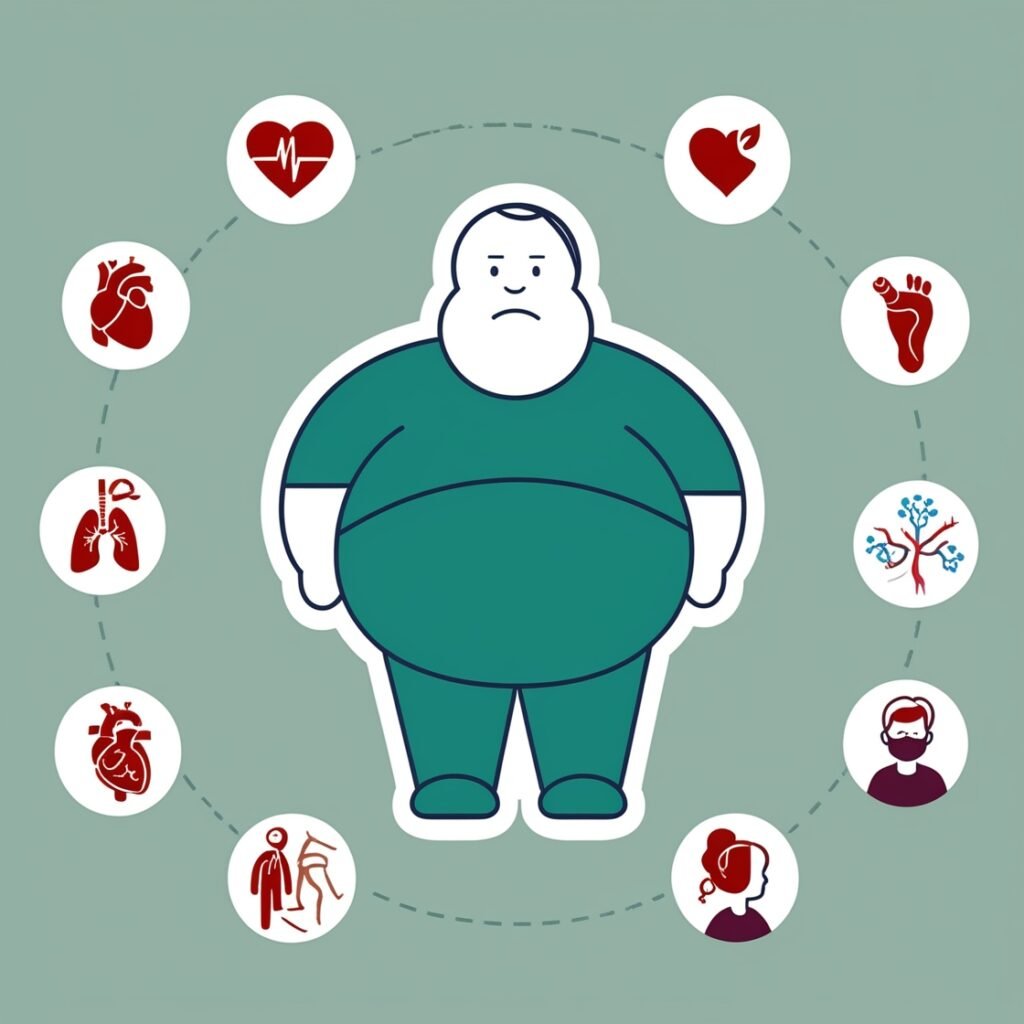Introduction
Celiac disease is a chronic autoimmune disorder that affects millions of people worldwide. For individuals with celiac disease, consuming gluten—a protein found in wheat, barley, and rye—triggers an immune response that damages the small intestine. This condition can lead to a wide array of symptoms and serious health complications if left untreated.
In this article, we will explore what celiac disease is, its symptoms, diagnosis, management, and tips for living a gluten-free lifestyle. Whether you suspect you have the condition or are newly diagnosed, this comprehensive guide will provide you with the information and support you need.
Table of Contents
What is Celiac Disease?
Celiac disease, also known as gluten-sensitive enteropathy, is a genetic autoimmune disorder where the ingestion of gluten leads to damage in the small intestine. The immune system mistakenly attacks the small intestine when gluten is consumed, specifically targeting the villi, which are tiny, finger-like projections that absorb nutrients. Over time, this damage can lead to malnutrition and other serious health issues.
It can manifest at any age, and the symptoms vary from mild to severe. Left untreated, it can lead to long-term health consequences, but a strict gluten-free diet is an effective way to manage the condition.

Causes and Risk Factors
The exact cause is unknown, but it is known to be triggered by gluten consumption in genetically predisposed individuals. Some factors that may increase the risk of developing celiac disease include:
- Genetics: Celiac is often inherited. Individuals with a first-degree relative (parent, sibling) with the disease have a 1 in 10 risk of developing it.
- Environmental factors: Certain viral infections and changes in gut microbiota may also contribute to the onset of the disease.
- Other autoimmune diseases: People with other autoimmune disorders, such as Type 1 diabetes or autoimmune thyroid disease, are more likely to develop celiac disease.
- Age and gender: Celiac disease is more common in women than men and can develop at any age.
Symptoms of Celiac Disease
The symptoms can vary widely from person to person and may depend on age, the severity of the disease, and how long someone has been exposed to gluten. Common symptoms include:
Gastrointestinal Symptoms
- Diarrhea
- Bloating
- Gas
- Abdominal pain
- Constipation
- Nausea and vomiting
Non-Gastrointestinal Symptoms
- Fatigue
- Anemia
- Joint pain
- Weight loss
- Depression or anxiety
- Skin rashes (dermatitis herpetiformis)
- Infertility or recurrent miscarriage
- Delayed growth in children
Table 1: Common Symptoms of Celiac
| Gastrointestinal Symptoms | Non-Gastrointestinal Symptoms |
|---|---|
| Diarrhea | Fatigue |
| Bloating | Anemia |
| Gas | Joint pain |
| Abdominal pain | Weight loss |
| Constipation | Depression or anxiety |
It’s important to note that some individuals may have “silent” celiac disease, meaning they do not experience noticeable symptoms but still suffer from intestinal damage.
Diagnosis

Diagnosing celiac disease involves a combination of medical history, physical examination, blood tests, and biopsy.
- Blood Tests:
- The most common blood test is the tissue transglutaminase antibody (tTG-IgA) test, which checks for antibodies that are typically elevated in people with celiac.
- Other tests may include total serum IgA, deamidated gliadin peptide (DGP) antibodies, and endomysial antibodies (EMA).
- Endoscopy and Biopsy:
- If blood tests suggest celiac disease, an endoscopy may be performed. During this procedure, a small sample of tissue (biopsy) is taken from the small intestine to check for damage to the villi.
It is crucial to be eating gluten regularly during testing to avoid false negatives.
Complications of Untreated Celiac Disease
If celiac is not diagnosed or managed properly, it can lead to several complications, including:
- Malnutrition: Damage to the small intestine can prevent proper absorption of nutrients, leading to deficiencies in vitamins and minerals such as iron, calcium, and vitamin D.
- Bone weakening: Osteopenia and osteoporosis can occur due to poor calcium absorption.
- Neurological problems: Some people may experience numbness or tingling in the hands and feet, seizures, or migraines.
- Infertility and miscarriage: In women, untreated celiac disease can lead to reproductive issues.
- Increased risk of cancer: People with untreated celiac disease may have a higher risk of developing intestinal cancers, including lymphoma.
The Gluten-Free Diet: Management
The only treatment is a strict, lifelong gluten-free diet. This means avoiding all foods and products containing wheat, barley, and rye. Some common foods that contain gluten include:
- Bread, pasta, and pizza
- Cereals and baked goods
- Processed foods with gluten additives
Gluten-Free Alternatives:
- Grains: Rice, quinoa, millet, and gluten-free oats.
- Flours: Almond flour, coconut flour, and corn flour.
- Snacks and substitutes: Gluten-free bread, pasta, and pizza dough made from alternative flours.
Table 2: Gluten-Free Alternatives
| Traditional Gluten Foods | Gluten-Free Alternatives |
|---|---|
| Wheat pasta | Gluten-free rice pasta |
| Wheat bread | Gluten-free bread (almond or rice flour) |
| Barley cereal | Quinoa or corn-based cereals |

Living with Celiac
It requires careful attention to diet and lifestyle choices. Here are some practical tips to help manage the condition:
- Read labels carefully: Gluten can be hidden in processed foods, sauces, and condiments.
- Communicate with restaurants: Always inform restaurant staff about your gluten-free requirements and ask about gluten-free options.
- Plan meals ahead: Having a weekly meal plan can make it easier to stay on track and avoid accidental gluten consumption.
- Join a support group: Connecting with others who have celiac disease can provide emotional support and practical advice.
Statistics
Celiac is a global health concern, affecting people of all ages and backgrounds. Here are some key statistics:
- Prevalence: Celiac disease affects approximately 1 in 100 people worldwide, with many cases remaining undiagnosed.
- Diagnosis rates: In the United States, around 2.5 million people are undiagnosed and at risk for long-term health complications.
- Gender differences: Women are more likely to be diagnosed with celiac disease than men.
Table 3: Celiac Statistics
| Statistic | Data |
|---|---|
| Global prevalence | 1 in 100 people worldwide |
| Undiagnosed cases in the U.S. | 2.5 million |
| Increased risk for first-degree relatives | 1 in 10 |
Conclusion
Celiac disease is a serious autoimmune disorder that requires careful management through a strict gluten-free diet. While it can be challenging, adhering to a gluten-free lifestyle can prevent complications, improve health, and allow individuals with celiac disease to lead full, healthy lives.
If you suspect you have celiac, consult a healthcare professional for proper testing and diagnosis. With the right knowledge and support, you can manage this condition effectively.
References
- National Institute of Diabetes and Digestive and Kidney Diseases (NIDDK). Celiac Disease. https://www.niddk.nih.gov/health-information/digestive-diseases/celiac-disease
- Mayo Clinic. Celiac Disease: Symptoms & Causes. https://www.mayoclinic.org/diseases-conditions/celiac-disease/symptoms-causes/syc-20352220
- Beyond Celiac. Celiac Disease Statistics. https://www.beyondceliac.org/celiac-disease/facts-and-figures/
- Celiac Disease Foundation. Gluten-Free Diet. https://celiac.org/gluten-free-living/gluten-free-foods/




